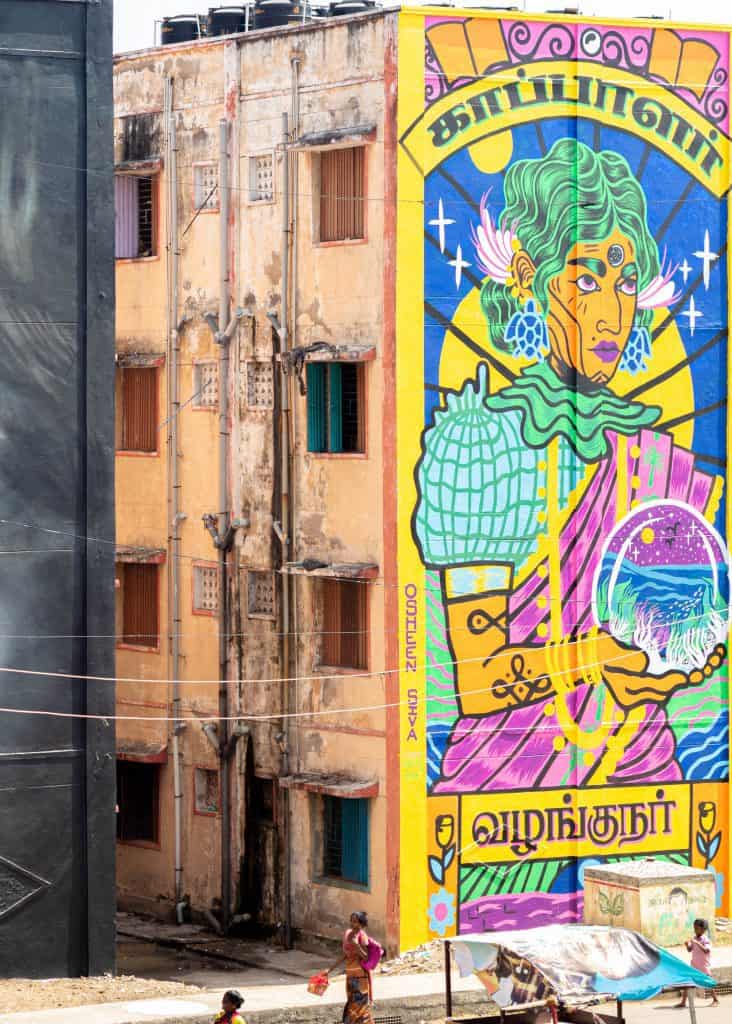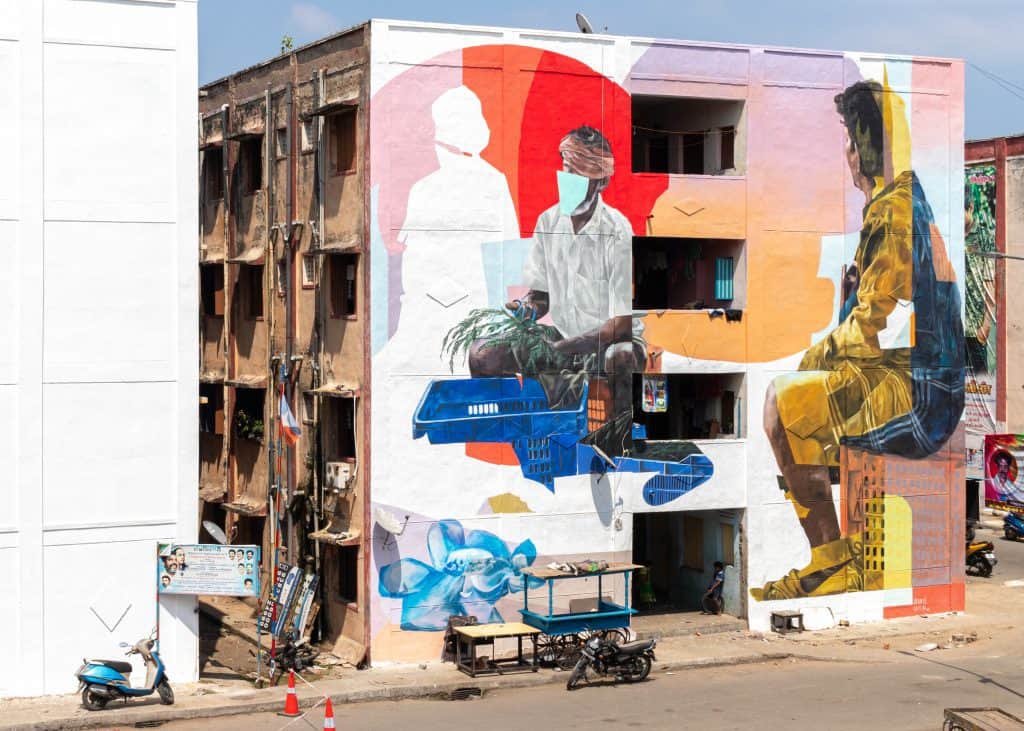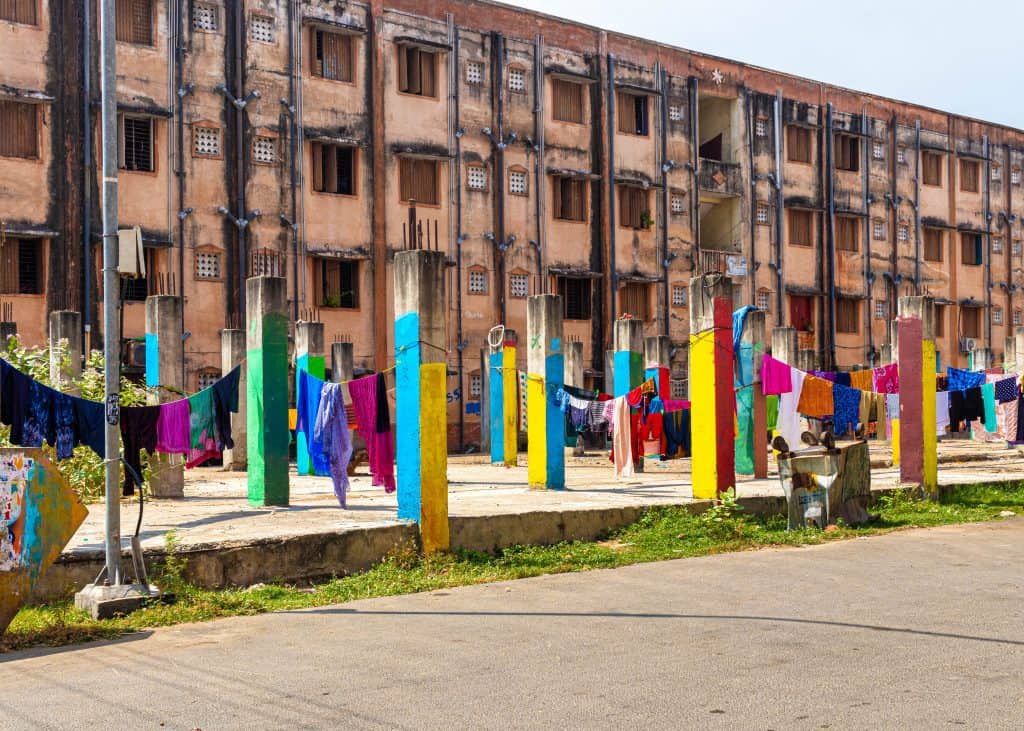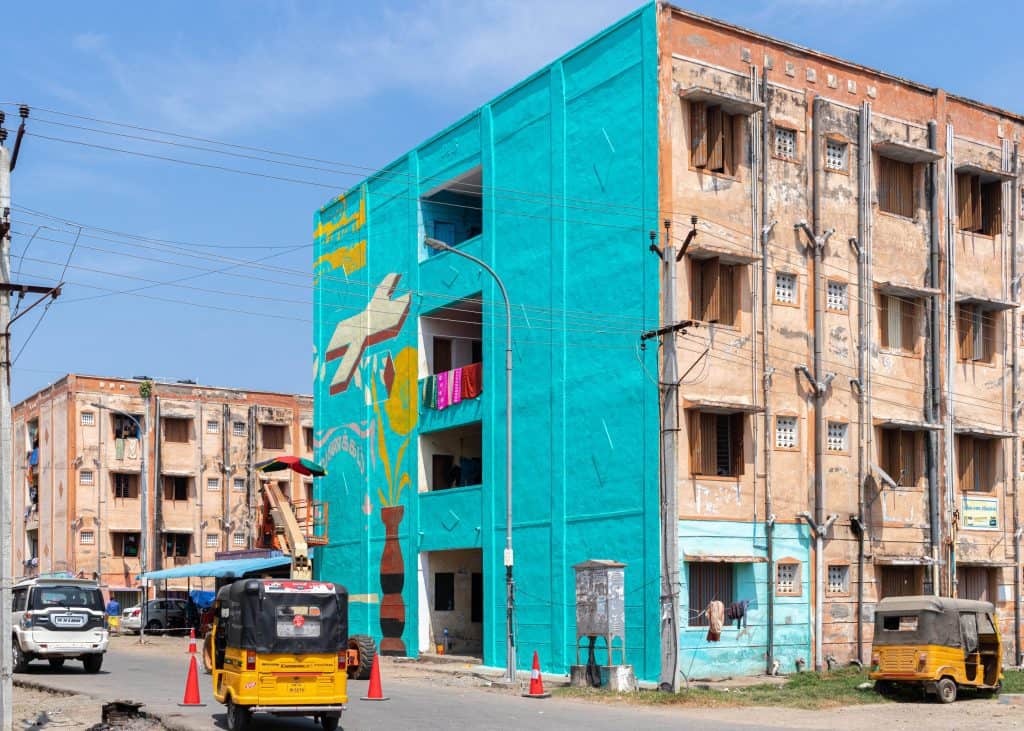Chennai’s Kannagi Nagar district is all set to be transformed into the city’s first art district. A clamorous locality based off OMR Road, it is one of the largest conglomeration of settlements in the city. “We wanted to bring art out of the museums and galleries and put it into daily spaces,” says Dr Alby John, the Regional Deputy Commissioner (South) Greater Chennai Corporation, “Art is not just exclusive but has also been exclusionary. It has been confined to people who belong to certain socio-economic strata of the society and we wanted everyone to experience art and the artists.”
He also points out that Kannagi Nagar is home to people from various parts of the city. “There are around 23,000 families living here and (it is) a thriving public place to demonstrate art and artists — that’s one of the main reasons for identifying this place.”
The Chennai Corporation has invited St+art India (@startindia) to drive this project in Kannagi Nagar. St+art India is a not-for-profit organisation founded in 2014 with the intent of making art more democratic and for all. St-art India in association with Asian Paints has completed 5 murals in Kannagi Nagar which are now open for people to view. These murals will be an ongoing series of artwork that people can relate to and communicate with.
Giulia Ambrogi, curator and co-founder of St-art India says, “It’ s been a very interesting story with many of our artists who choose to come here. One artist has been inspired by the colours painted on some houses he saw in Tiruvannamalai. He took inspiration from those and translated it into the pastel shades on the first mural that you see as you walk in.”
For those of you who haven’t been to Kannagi Nagar yet, you must. But till then, take a look at these photos of the astounding murals on display:
‘Sisters’ by A-kill (@ad57akill_t3k)
His piece for the Kannagi Art District features two smiling sisters on a huge facade. This mural is dedicated to the core spirit of Kannagi Nagar which A-kill thought was characterized by its young people
‘Protectors and Providers’ by Osheen Siva (@osheen.siva)
Drawing inspiration from the livelihoods of women in the fisherfolk communities of Chennai, Osheen depicts a strong lady character wearing a traditional Sari, holding a bowl of water encapsulating an entire universe within. The words ‘Protectors’ (காப்பாளர் – top) and ‘Providers’ (வழங்குநர் – bottom) written in a Tamil typeface frame her piece.
A piece by Bronte Naylor (@brontenaylor).
Naylor’s piece is being adapted from an image she captured at the Koyembadu Flower Market and is inspired by the sheer number of transactions that sustain small ecosystems in a big economy.
‘Harbouring Hope’ by Kashmira Sarode (@kashmira_sarode)
Kashmira’s mural is dedicated to inhabitants of the area who had to move from the coast to Kannagi Nagar after the devastating tsunami of 2004. While the bottom half of her mural with oceanic waves and fluttering fish represents the natural disaster that caused the displacement of Kannagi Nagar’s residents, Sarode’s mother-daughter duo, placed amidst the waves is shown looking upwards and surrounded by iris flowers – symbolizing the essence of hope in possibly traumatic situations.
Art for social change
Initiatives such as ‘Neelam’ provide open-to-all, participative painting workshops for the residents of Kannagi. An incomplete roofless construction site with standing columns became the site for this inclusive experiment, where a walk in workshop was conducted for everyone to be a part of.
“There are a few problems which have been identified in Kannagi Nagar. Some issues are infrastructure-related and others are social issues such as crime, alcoholism and drug abuse. By using art as a medium, we have found a way to engage with the people and take this as an opportunity to address these issues. We hope art can be used to bring about social change,” adds Alby John.
Going forward
Guilia says, “A similar project was completed in the Lodhi art district, the number of people visiting it after three years is high. The point is to create fertile ground for art, for which we need to spend time. We have been in Kannagi Nagar since December, getting familiar with the area and speaking to the local leaders and the community before we started painting the murals.”
The project plans to complete around 14 to 15 wall murals and community walls in 2020 and continue next year with the same number of murals, probably in a different area of Chennai. The long term plan of Chennai Corporation is to gradually develop art districts around Chennai and introduce curated art tours for people visiting Chennai; this will change the way the place is identified. “But it is too early to announce something like that. We are taking baby steps now. Let’s see how this goes,” says a hopeful Alby John.
[Note: All descriptions of the murals and artists’ interpretations are taken from the Facebook page of St+Art India.]




